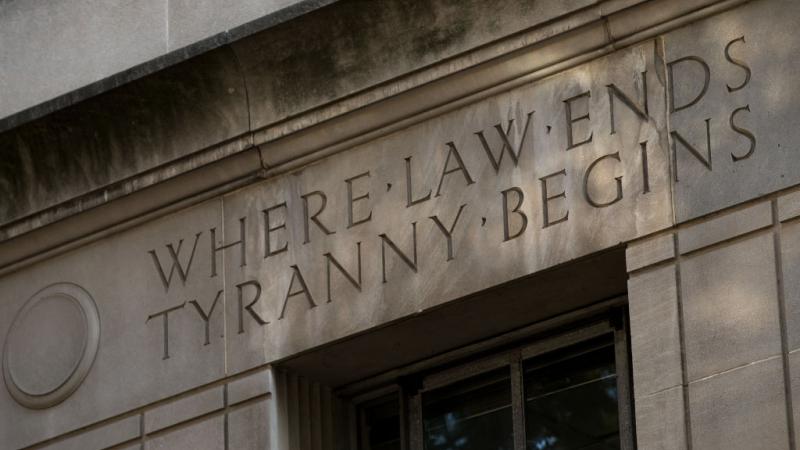Indiana looks to require voting machines with paper ballot backups by 2024
Indiana was one of just eight states that used voting machines in the 2020 presidential election that had no paper ballot backups.
The Indiana General Assembly recently passed a bill out of that requires all counties in the state to have voting machines with at least some paper ballot backups by July 1, 2024.
State law now says counties have until Dec. 31, 2029 to replace voting machines with no paper backup, and the Republican supermajority in the Indiana General Assembly has resisted calls to move this up to an earlier date, until now.
House Bill 1116 requires counties using Direct Recording Electronic device (DREs) machine that has no paper ballot backups will either have to replace them or make sure that they have attachments called Voter Verifiable Paper Audit Trail [VVPAT] printers for at least 10% of all voting machines by July 1, 2024.
The bill says the “audit trail” or paper ballot that is produced by the voting machine must include the following information: the name or code of the election; the date of the election; the date the audit trail [paper ballot] was printed; a security code and record number specific to each paper receipt assigned by the voting system; the name or designation of the voter’s precinct; the name or designation of each office on the voter’s ballot; the name of the candidate and the designation of the candidate’s political party selected by the voter; if the voter selects a straight-party ticket, the name of the political party the voter selected and a description of the text of any public question or judicial retention question and the response the voter selected.
H.B. 1116 was authored by the chairman of the House Committee on Elections and Apportionment, Rep. Timothy Wesco, R-Osceola, and also by Rep. Tim O’Brien, R-Evansville.
Indiana was one of just eight states that used voting machines in the 2020 presidential election that had no paper ballot backups, and one of only five states in which a majority of voters in 2020 lived in counties that used these machines.
The others were Tennessee, New Jersey, Mississippi and Louisiana.
In October 2020, the Indiana University Public Policy Institute released a report entitled “Indiana’s Voting Machines Vulnerable to Security Issues,” which said that 57% of voters in Indiana lived in counties using voting machines with no paper ballot backups.
“Using voting machines without a paper audit trail can leave Indiana vulnerable to several election security issues,” the researchers wrote. “Without a paper record of votes that were cast, it can be difficult to detect breaches or errors in the system, or to verify vote totals if an issue is uncovered.”
The DRE voting machines used in Indiana are manufactured and overseen by an Indianapolis-based company called MicroVote General Corp. They are used in the majority of Indiana counties, including some of the most populous counties in the state – Lake, Hamilton, Johnson, Boone, Hendricks and Tippecanoe.
Voters voting on the MicroVote Infinity DRE machines select candidates using push buttons, and there is no written record of the ballot – unless the county has a VVPAT printer attached to the machine and that printer is functioning properly.
The Fiscal Impact Statement that was attached to HB 1116 says all counties using the MicroVote DRE machines already have these VVPAT printers for at least 10% of their machines, and several have VVPAT printers for all of their voting machines, but that it is not known if all of the printers have been connected and used in elections.
Hamilton County Election Administrator Beth Sheller said last year the county did not have enough VVPAT printers for all voting machines in the 2020 general election, so did not use any.
When contacted, the Johnson County election administrator said they also have VVPAT printers, but not enough for all voting machines so only used them for early voting in the 2020 presidential election, not on election day.
Other counties did have them for all machines but chose not to use them.
“We did have the VVPAT. We didn’t use them in 2020,” says Jessica Fouts, the Boone County Clerk, saying the VVPAT printers are a lot of trouble to set up, and said since state law didn’t require they be used yet, the county made the decision not to do it.
DREs were introduced in the United States following the 2000 presidential election, when recounts in Palm Beach and Broward counties dealt with “hanging chads” from punch-card machines. The Help America Vote Act, passed in 2001, banned lever machines and punch-card ballots.
Voter integrity groups immediately raised concerns about electronic voting systems that produce no paper ballots that could be used to check the number of votes the voting machines produced, with the nonprofit organization Verified Voting saying voting systems that have voters fill out a paper ballot by hand are the “most resilient voting systems.”
“Any system that does not include a paper record or a step for voter verification should not be used,” they warn.
VVPAT printers for counties using the MicroVote DRE machines were purchased for counties by the Indiana secretary of state using state and federal funds provided under a 2019 state law to improve election security.
HB 1116 has now been referred to the Indiana House Ways & Means Committee, which will consider the fiscal impact of the bill, if any, on counties and the state as a whole.















